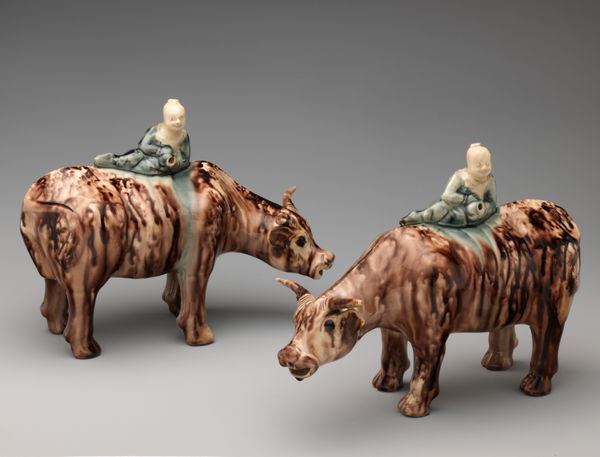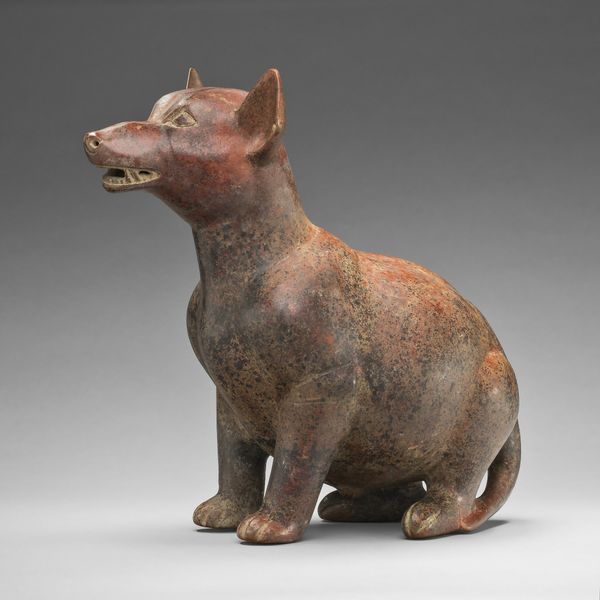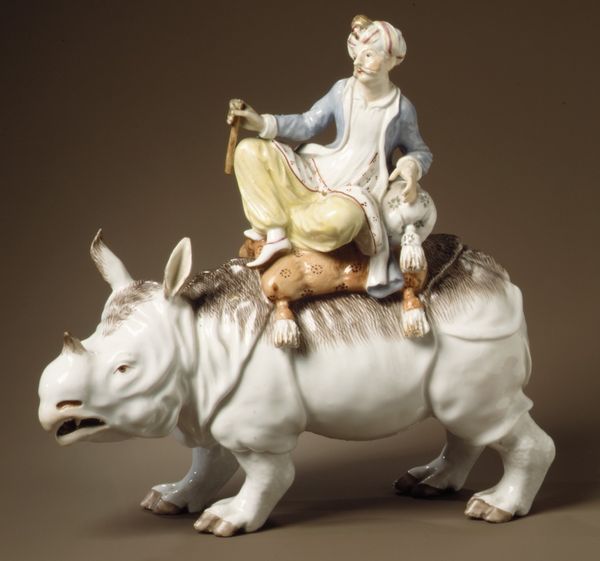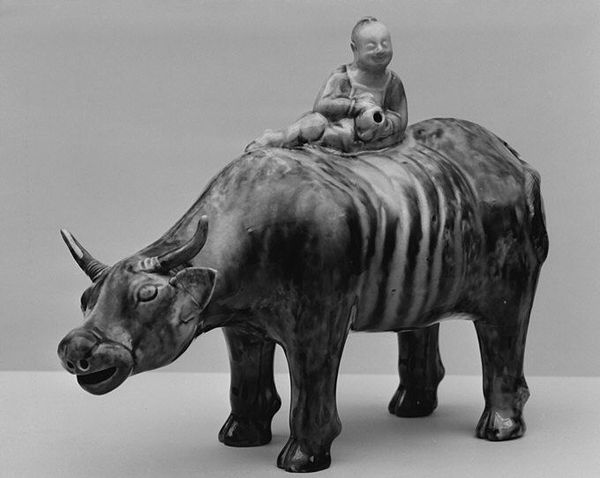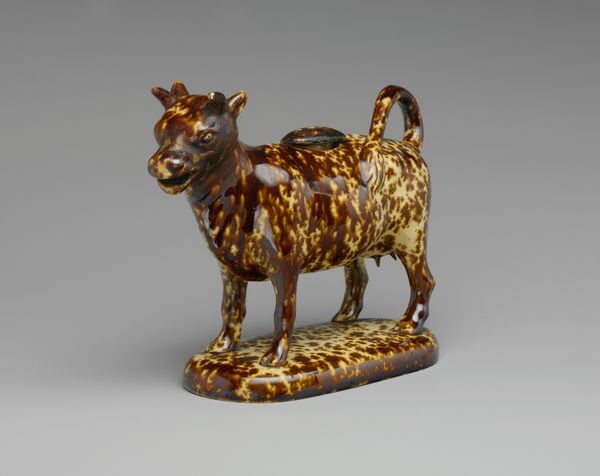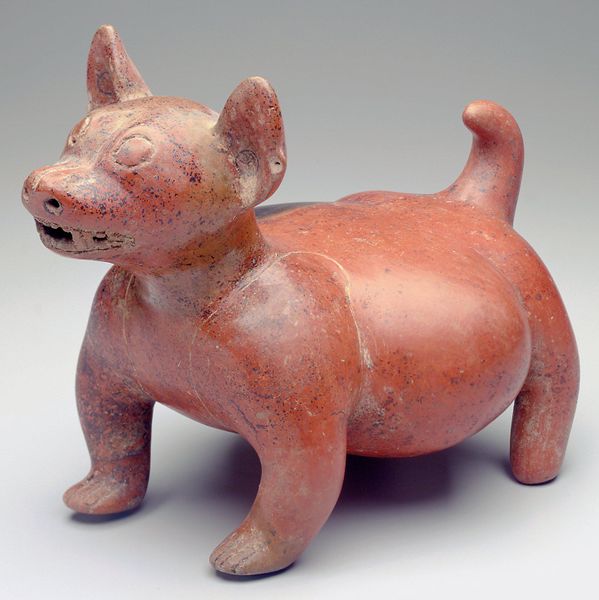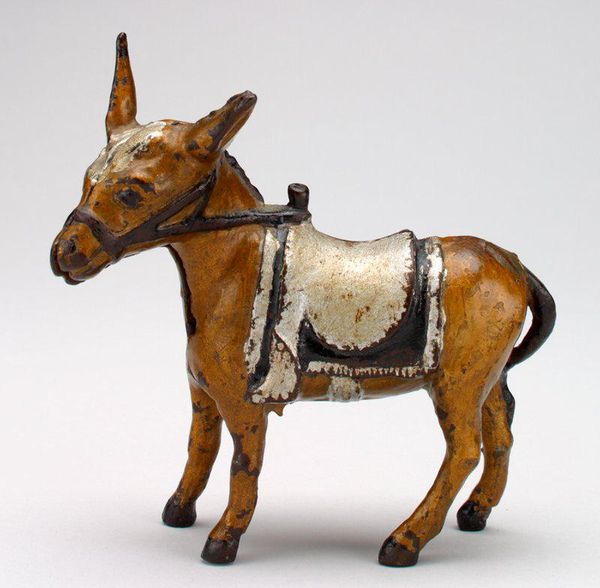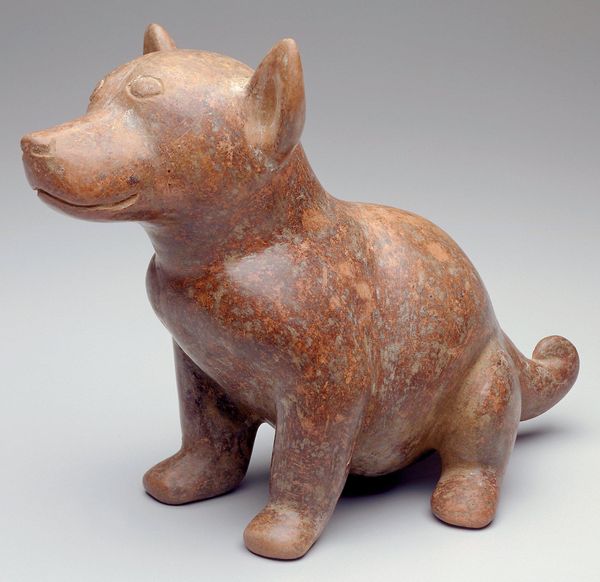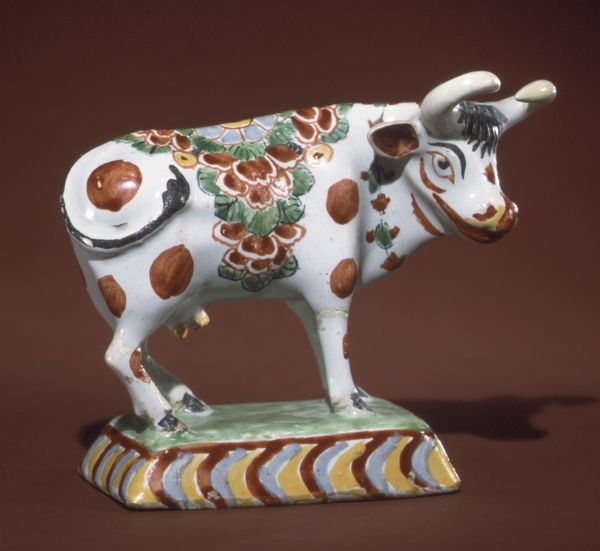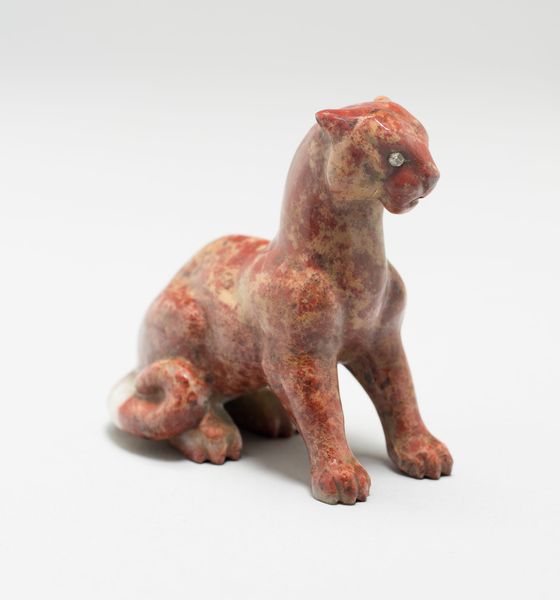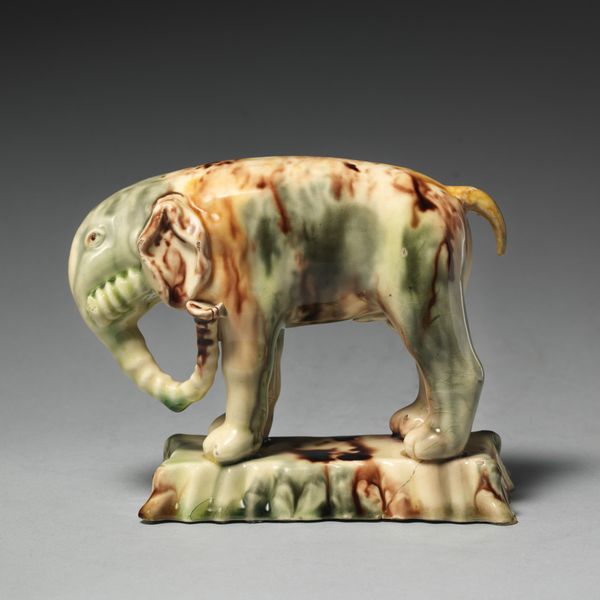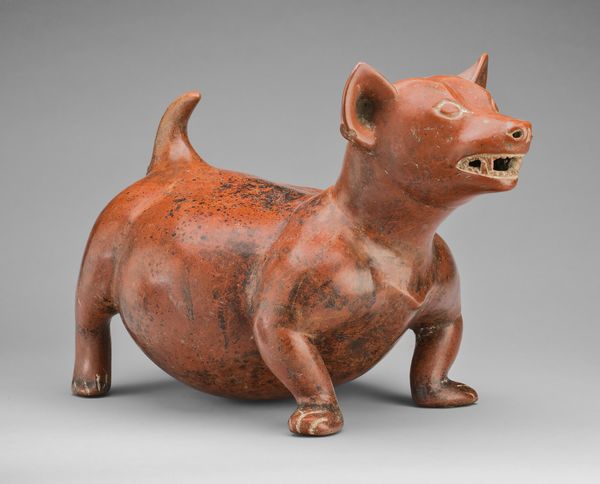
ceramic, sculpture, wood
#
ceramic
#
figuration
#
sculpture
#
orientalism
#
wood
#
genre-painting
#
decorative-art
Dimensions: Height (each): 7 3/4 in. (19.7 cm)
Copyright: Public Domain
Curator: We're looking at a fascinating pair of ceramic water buffalo sculptures, created sometime between 1745 and 1755, currently residing at the Metropolitan Museum of Art. What's your initial impression? Editor: My first thought is playful! The forms are solid and earth-toned with subtle blues in the ceramic glaze. A boy figure perches on each buffalo; their limbs dangling carefree. The overall design feels so deliberate and structurally sound. Curator: Indeed. These buffalo speak volumes about cultural exchange and Orientalism within European decorative arts of the mid-18th century. The figures of boys riding them point toward an idealized, perhaps romanticized, vision of Eastern life that captivated European audiences at the time. It makes you wonder, who were these pieces really for? Editor: I see your point about Orientalism. But technically, the mottled glaze effect on the buffaloes’ bodies is stunning. The colors are rich and bleed organically, with delicate nuances across the surfaces. Curator: The details tell us much. These sculptures often graced the homes of wealthy Europeans, acting as exotic conversation starters or symbols of worldly sophistication. However, this idealized representation often overshadows the realities of the cultures they draw from, re-enforcing power dynamics through this selective interpretation. Editor: While I appreciate that angle, can we acknowledge the undeniable craftsmanship involved? The proportions, the smooth curves, the sheer skill in manipulating ceramic to create such dynamic, lifelike forms—it’s a testament to the artist's understanding of form and the material's potential. It gives great presence to such domestic objects. Curator: Absolutely. We have to consider the complex layering of aesthetic skill, patronage, and cultural assumptions embedded in these sculptures. The beauty and charm on display simultaneously reflect a specific worldview from a different time period and cultural position. Editor: Thinking about these details certainly adds complexity to an initial feeling of charm and ease. The formal grace still holds, but is definitely mediated by a rich layering of colonial undertones. Curator: Right! Now that you see the sociocultural narratives within, the object becomes charged with greater implications. It serves as a window into a past marked by both fascination and misrepresentation.
Comments
No comments
Be the first to comment and join the conversation on the ultimate creative platform.
